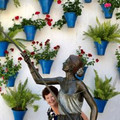的点评
Well worth a visit to this beautiful important building.
阿奇吉纳西欧宫的点评
点评:The Archiginnasio construction dates back to the 16th century. The name Archiginnasio came about to indicate the building housed the school of the university of Bologna. The Archiginnasio ceased to be a University in 1803 when it was moved to Palazzo Poggi where it remains to this very day.
Within the Archiginnasio ,on the second floor, is housed an ancient library with over a million books. You can view this part from a doorway and take photos. The room from which this is viewed from is a great hall that is used as a congress room, it is known as "Sala dello Stabat Mater" in memory of the first performance of Rossini’s ,Stabat Mater.
The walls of the building form an enormous heraldic complex, made up of six thousand coats of arms painted on its walls. It is a beautiful sight.
The upper level of the building still houses the anatomical theatre, which was built in 1636.This was used for anatomy lectures. It is a beautiful room that was bombed in WW2 by the allies on January 29, 1944, the room suffered extensive damage, but was reconstructed, using all the surviving elements retrieved from the rubble.
The entry Fee was 3 Euros each. You can download a informative description on your phone with the QR Code available.
Within the Archiginnasio ,on the second floor, is housed an ancient library with over a million books. You can view this part from a doorway and take photos. The room from which this is viewed from is a great hall that is used as a congress room, it is known as "Sala dello Stabat Mater" in memory of the first performance of Rossini’s ,Stabat Mater.
The walls of the building form an enormous heraldic complex, made up of six thousand coats of arms painted on its walls. It is a beautiful sight.
The upper level of the building still houses the anatomical theatre, which was built in 1636.This was used for anatomy lectures. It is a beautiful room that was bombed in WW2 by the allies on January 29, 1944, the room suffered extensive damage, but was reconstructed, using all the surviving elements retrieved from the rubble.
The entry Fee was 3 Euros each. You can download a informative description on your phone with the QR Code available.
翻译:阿奇吉纳西欧宫的建造可追溯到 16 世纪。阿奇吉纳西欧宫这个名字的由来,表明这座建筑是博洛尼亚大学的学校所在地。1803 年,阿奇吉纳西欧宫不再是一所大学,它被迁至波吉宫,至今仍在那里。
阿奇吉纳西欧宫的二楼是一座古老的图书馆,藏书超过一百万本。您可以从门口看到这部分并拍照。可以看到这个房间的房间是一个用作会议室的大厅,它被称为“圣母悼歌厅”,以纪念罗西尼的《圣母悼歌》的首次演出。
建筑的墙壁形成了一个巨大的纹章群,由六千个绘在墙上的徽章组成。这是一个美丽的景象。
建筑的上层仍然是解剖剧院,建于 1636 年。这里用于解剖学讲座。这是一个美丽的房间,二战期间被盟军于 1944 年 1 月 29 日轰炸,房间遭受了严重损坏,但后来重建,使用了从废墟中找回的所有幸存元素。
入场费为每人 3 欧元。您可以使用可用的二维码在手机上下载信息描述。
阿奇吉纳西欧宫的二楼是一座古老的图书馆,藏书超过一百万本。您可以从门口看到这部分并拍照。可以看到这个房间的房间是一个用作会议室的大厅,它被称为“圣母悼歌厅”,以纪念罗西尼的《圣母悼歌》的首次演出。
建筑的墙壁形成了一个巨大的纹章群,由六千个绘在墙上的徽章组成。这是一个美丽的景象。
建筑的上层仍然是解剖剧院,建于 1636 年。这里用于解剖学讲座。这是一个美丽的房间,二战期间被盟军于 1944 年 1 月 29 日轰炸,房间遭受了严重损坏,但后来重建,使用了从废墟中找回的所有幸存元素。
入场费为每人 3 欧元。您可以使用可用的二维码在手机上下载信息描述。
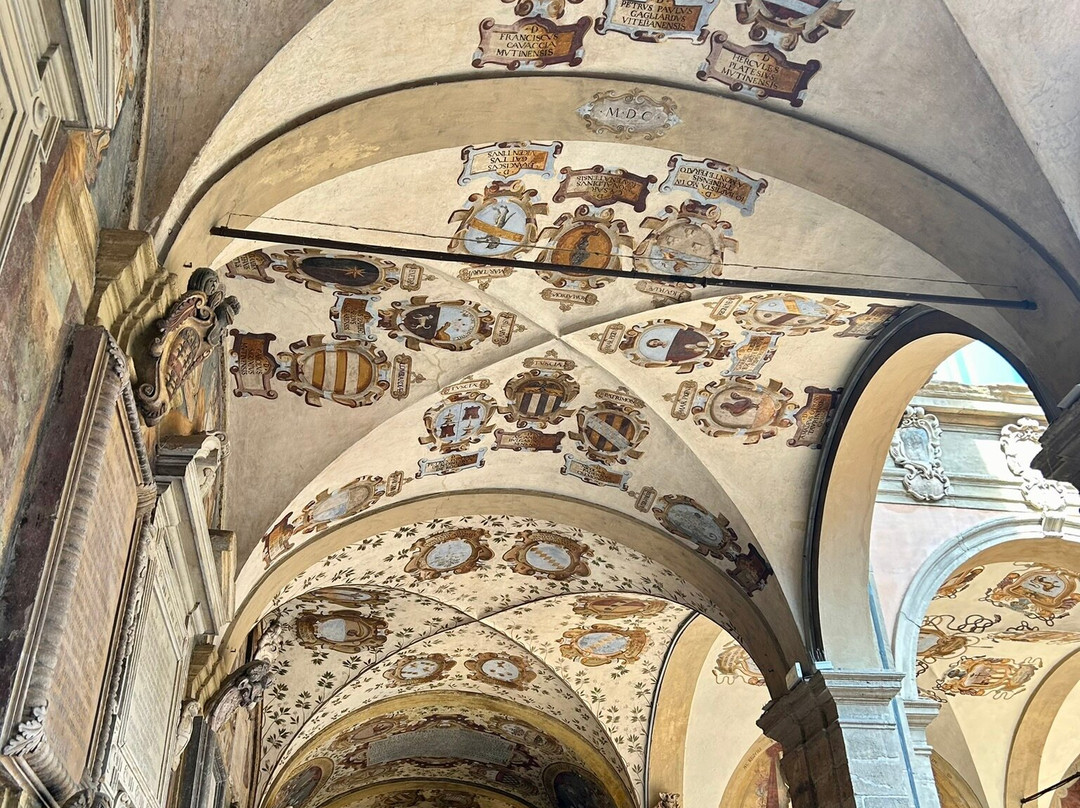
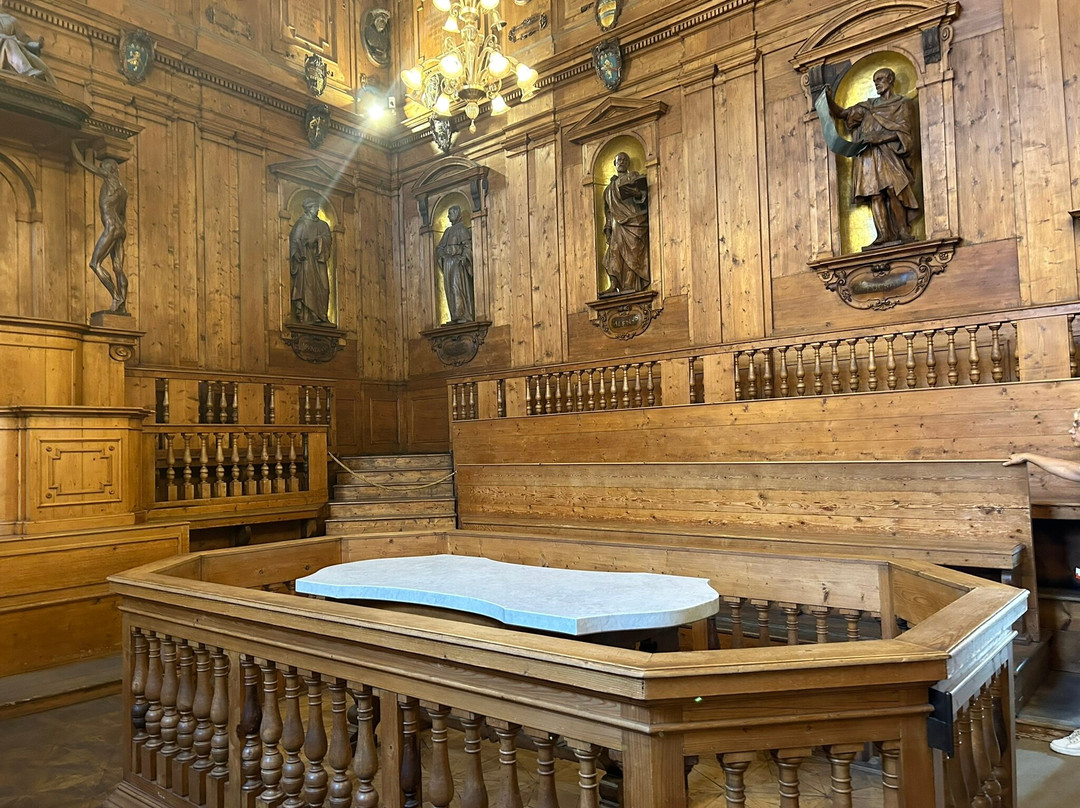
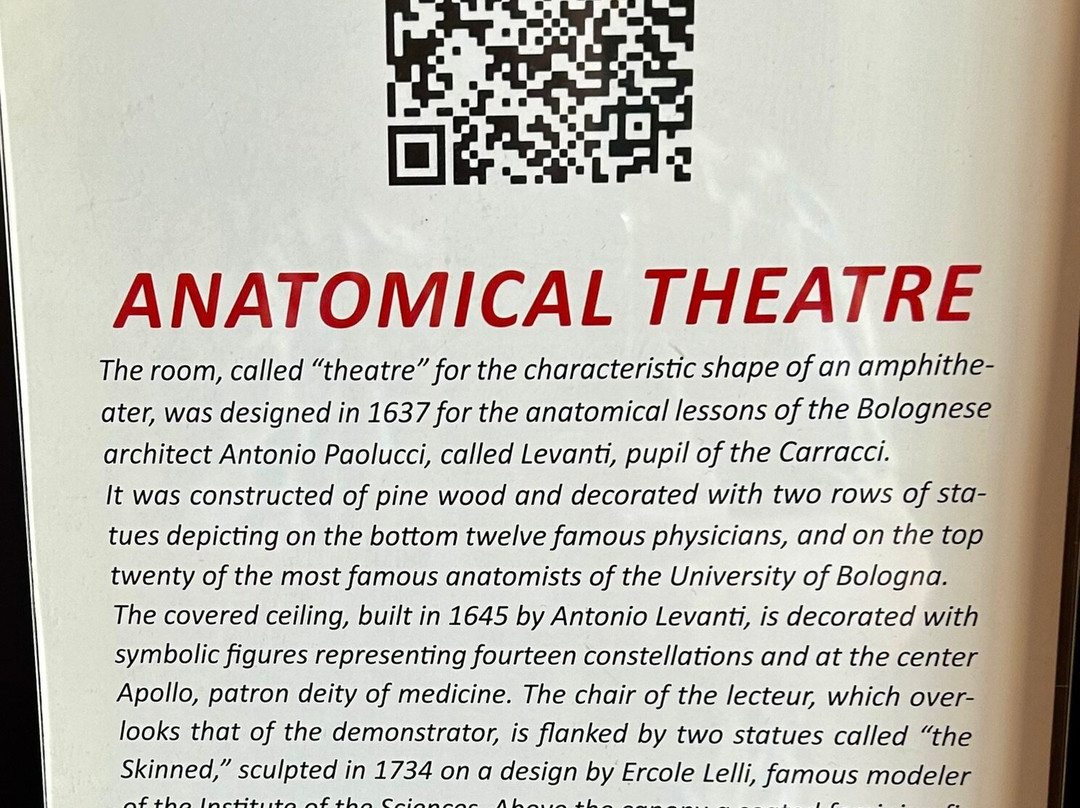

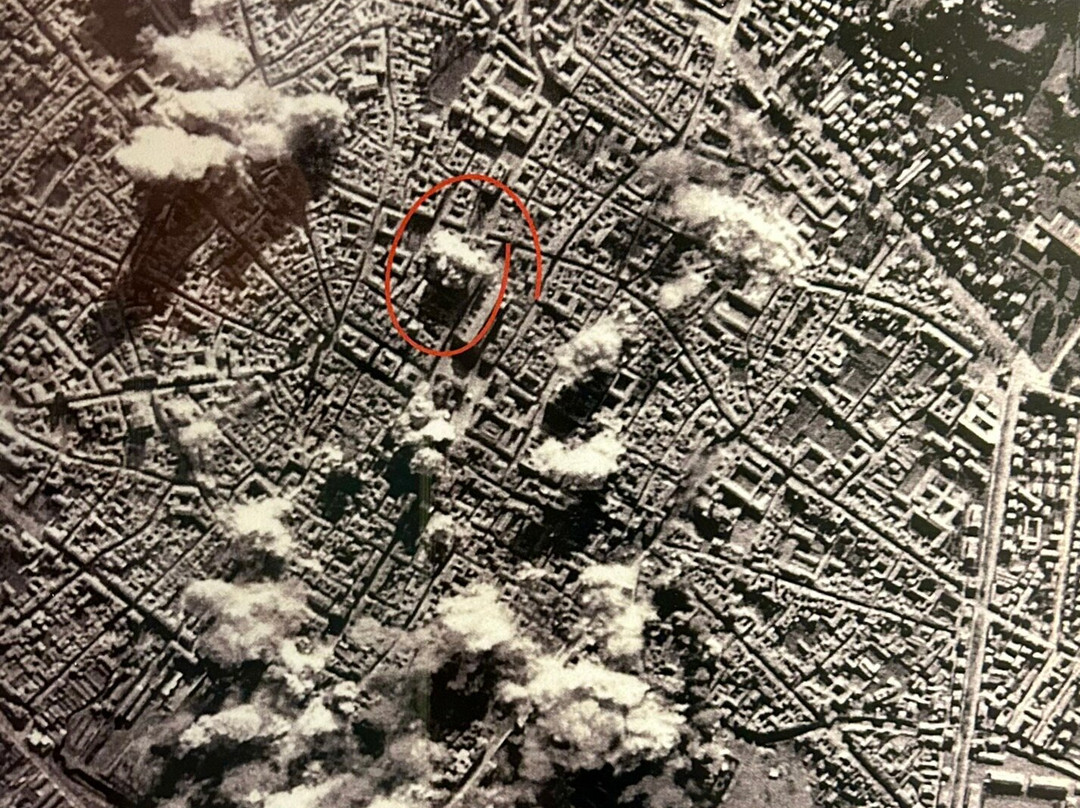
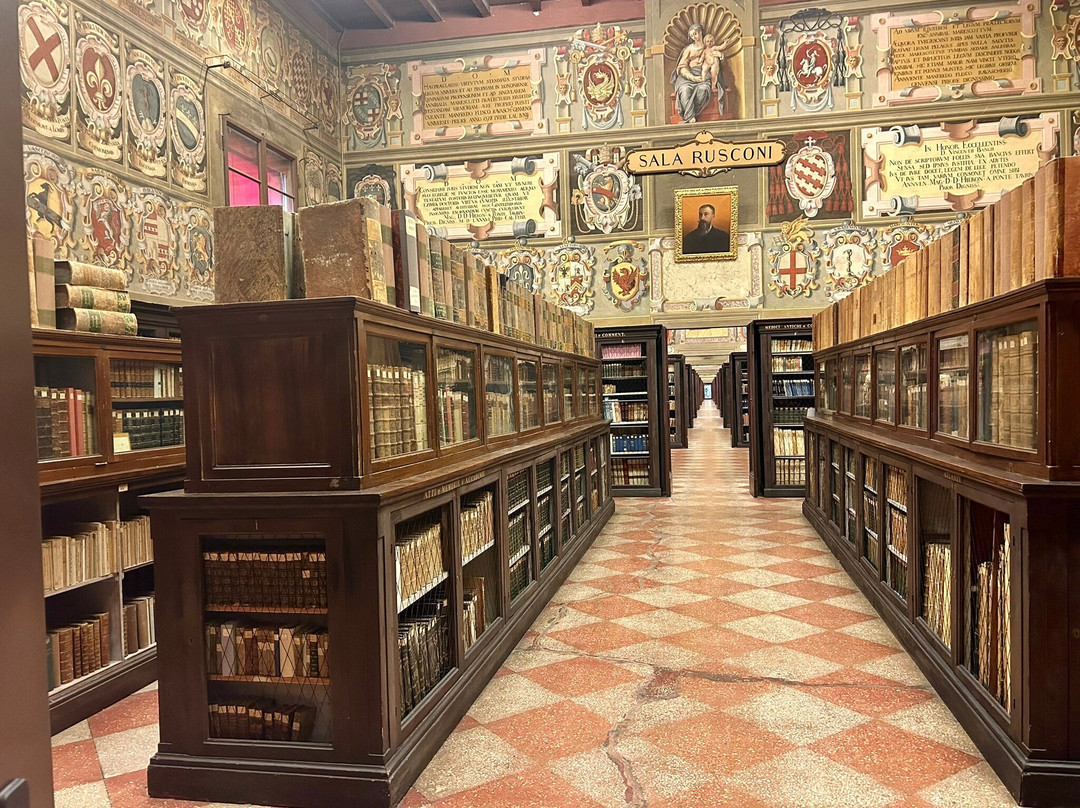

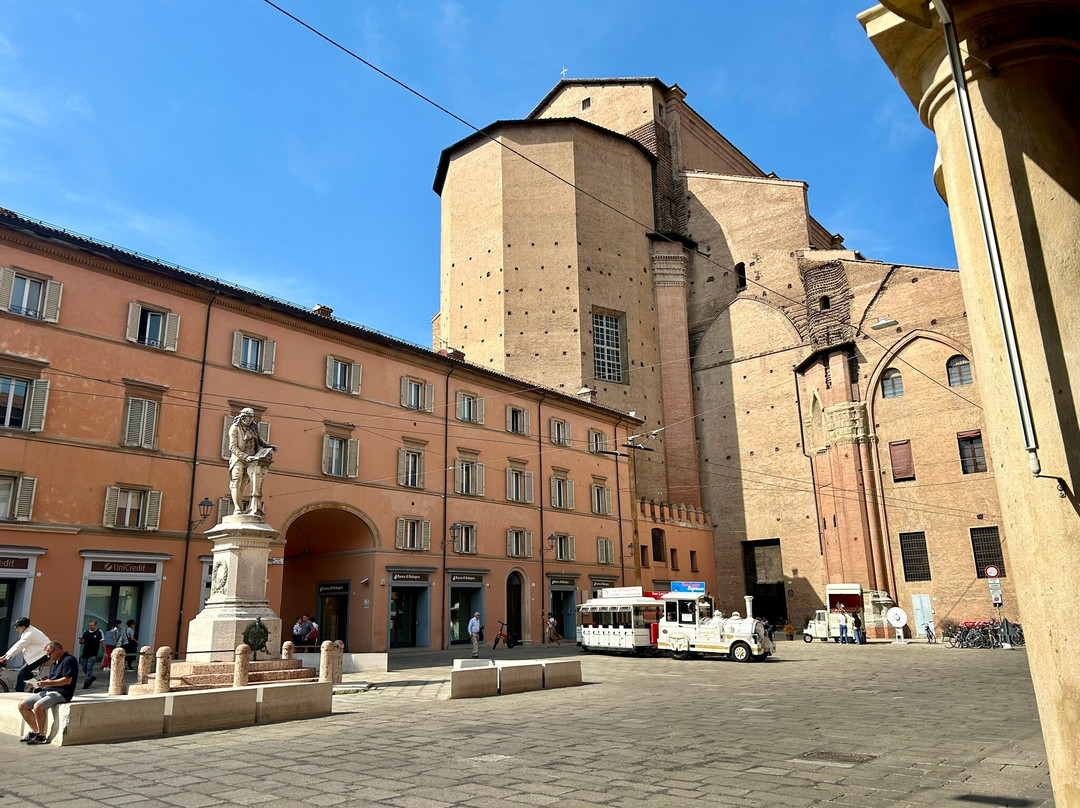
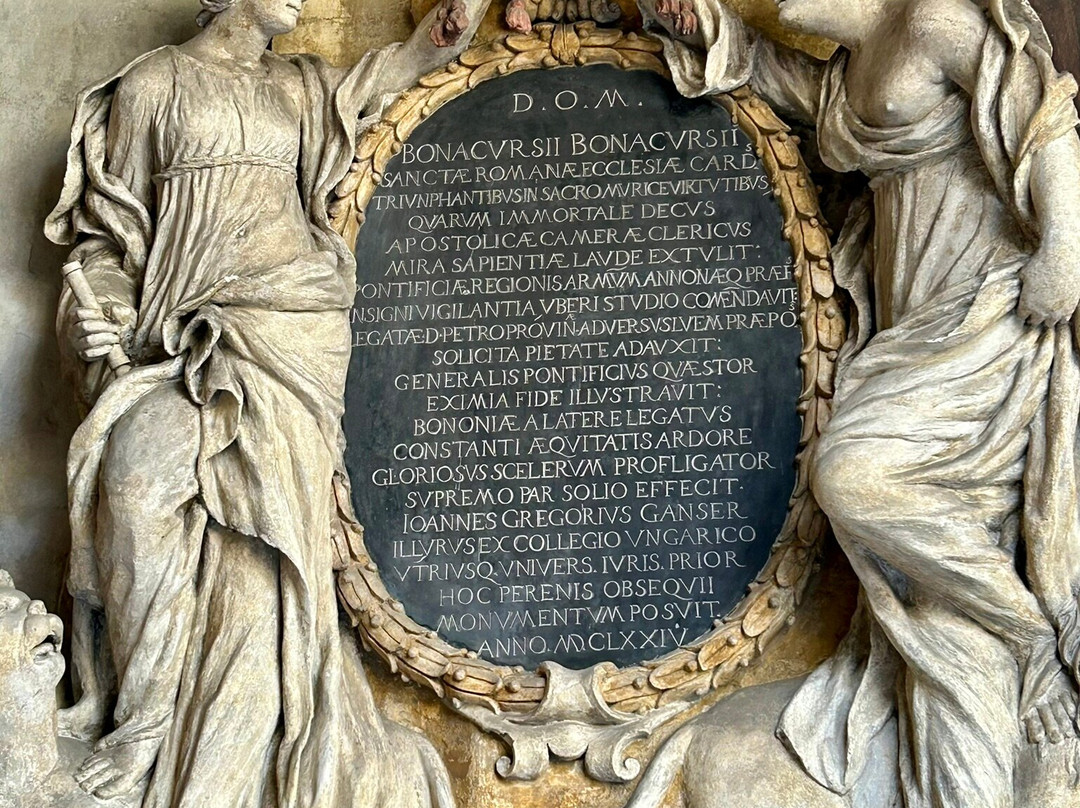
此点评仅代表旅行者个人的主观意见,并不代表TripAdvisor以及其合作方的意见。
关于我们
|
新闻动态
|
商务合作
|
会员中心
|
业主中心
|
业主通
|
常见问题
|
意见反馈
|
联系我们
|
营业执照
© 2025 Tripadvisor 版权所有。
使用条款 |隐私政策 |网站工作原理
部分照片由 VFM Leonardo 提供。
* Tripadvisor不是旅行社,也不是旅游预订服务代理商。我们提供免费、客观、公正的旅游资讯服务。 (显示更多)
TripAdvisor LLC 既不是预订代理商,也不是旅游运营商,不会向网站用户收取任何服务费。 按照规定,在 Tripadvisor 发布机票价格、游览和旅行套餐的合作伙伴(航空公司、旅行提供商及预订代理商),其标价须包含所有费用和附加费用。 例如, 机场出入境税费、消费税与其他服务费、手续费、杂费及附加费用。 当您向我们的某个合作伙伴进行预订时,请务必查阅他们的网站以了解当地行政部门要求的所有适用费用的具体情况。 除非另有说明,机票价格通常指的是一个人的价格(以人民币计)。
为方便起见,TripAdvisor LLC 根据从我们的预订合作伙伴获取的空房率计算每个酒店的均价。 对于游览和景点来说,所显示价格通常是每位成人的最低可用价格。 对于列出的任何旅行套餐或优惠,TripAdvisor LLC 无法保证任何特定的费率或价格。 此外,酒店均价每晚会更新,并以您的首选币种表示(使用现行汇率)。 由于这些已换算的价格是预估价格,因此,有关具体金额和币种请与预订网站进行核实。
此外,TripAdvisor LLC 无法保证我们网站上宣传的价格随时有效。 标价可能需要预订一定天数才能生效,或有不可用日期、使用条件或限制。
TripAdvisor公司对外部网站的内容一概不负责。优惠价格中不含税和其他费用。
ICP证:沪B2-20200433
沪ICP备20013175号
 沪公网安备31010502005427号
沪公网安备31010502005427号鹰程信息技术(上海)有限公司
货币/国家及地区
¥CNY
中国
